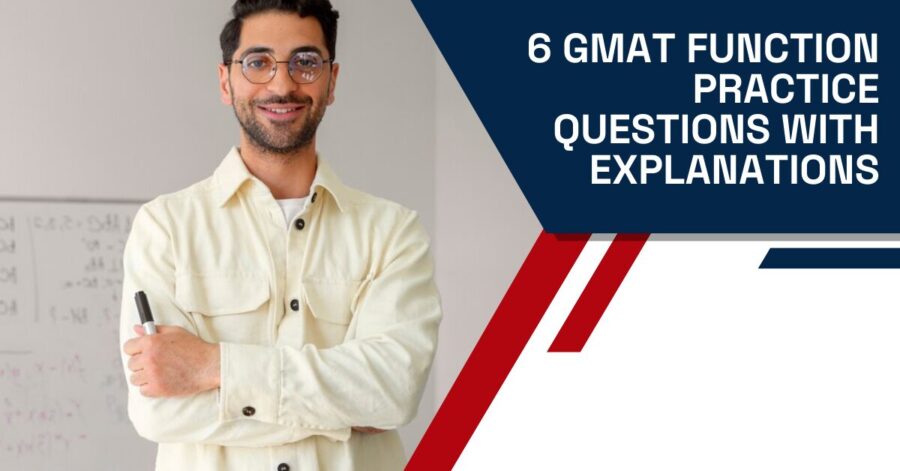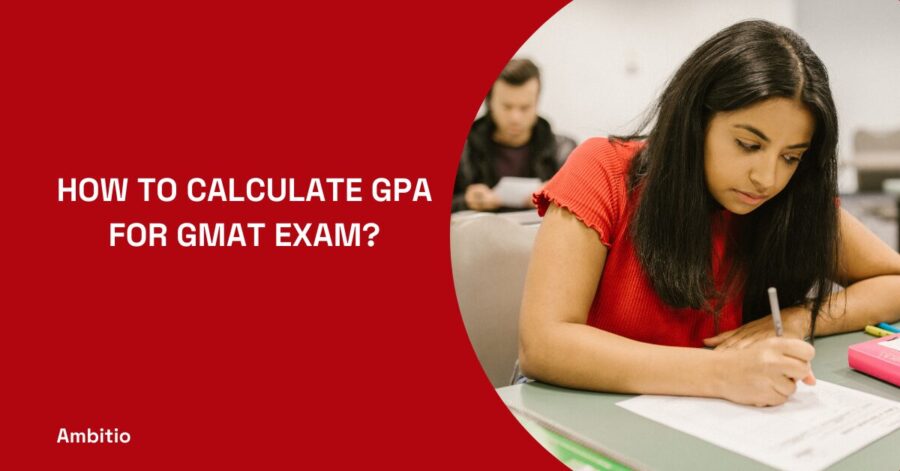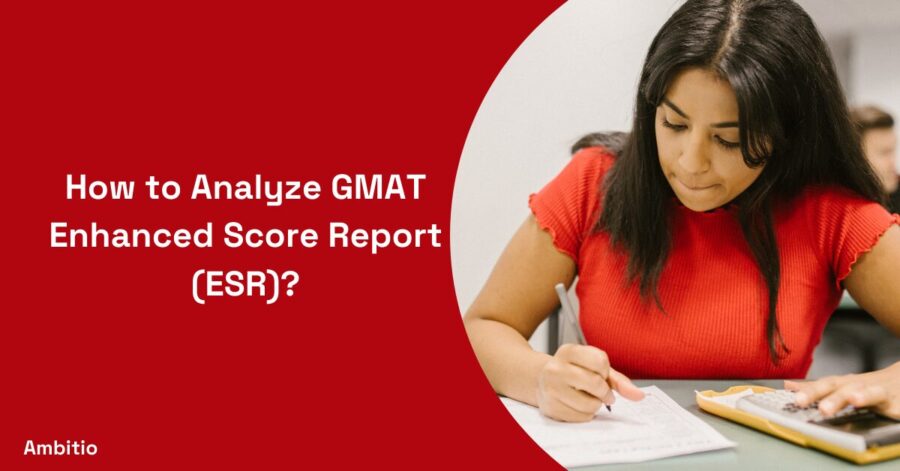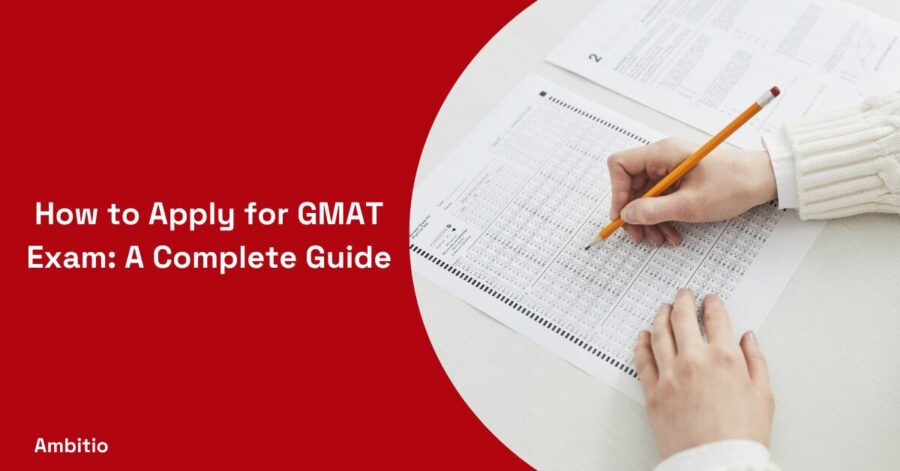2 September 2024
6 minutes read
6 GMAT Function Practice Questions With Explanations

Key Takeaways
- Focus on understanding functions, their compositions, and how to solve them.
- Regular practice with real-world examples is crucial for mastering GMAT function questions.
- Employ strategy like visualization, and the two-pass system to enhance your learnings.
- Teach the material to others and engage actively to solidify your knowledge.
- Practice under real test conditions to build stamina and familiarity with the test environment.
Preparing for the GMAT test? We understand your headache. GMAT exams can be challenging, especially when it comes to mastering functions and equations. In this last-minute guide, we will cover 6 GMAT function practice questions that will enhance your preparation. Understanding the value of each variable, how to plug numbers into equations, and defining the domain are crucial skills for excelling in the GMAT.
We provide detailed explanations and expert solutions to ensure you grasp each concept thoroughly. Whether you’re working with integers, sequences, or complex functions, these practice questions are designed to help you succeed.
So, stick to the guide till the end – we gonna cover the essential elements of GMAT functions to boost your score and confidence.
What are the function questions in the GMAT exam?
GMAT function questions are a key part of the quantitative section that requires a solid understanding of mathematical expressions and their applications. These questions often involve interpreting functions, using parentheses correctly, and solving for the exact value of variables like “x”.
Practice tests are invaluable for mastering these concepts because they provide real-world examples and challenges similar to those found on the actual GMAT. In addition to the GMAT test prep, getting ready for other standardized tests like the SAT, ACT test prep, and SSAT also benefits from a strong grasp of functions. Whether you’re enrolled in ISEE courses, SSAT test prep, or even MCAT courses, understanding functions is crucial.
For those seeking personalized guidance, options abound from tutors to classes in various locations. By honing your skills through targeted practice, you can achieve precise output and improve your overall performance on test day.
6 mostly asked GMAT function practice questions with explanations

The following questions cover various concepts related to functions, including function composition, domain and range, inverse functions, and properties of exponential and logarithmic functions.
Here are 6 mostly-asked GMAT function practice questions related to functions:
1. If f(x) = 2x + 3 and g(x) = x^2 – 2, what is f(g(2))?
Evaluate 𝑔(2)g(2): The function 𝑔(𝑥)g(x) is defined as:
𝑔(𝑥)=𝑥2−2g(x)=x2−2
We substitute 𝑥=2x=2 into the function 𝑔(𝑥)g(x):
𝑔(2)=22−2g(2)=22−2
Calculate the exponent and subtraction:
𝑔(2)=4−2=2g(2)=4−2=2
Evaluate 𝑓(𝑔(2))f(g(2)): We now have 𝑔(2)=2g(2)=2. Next, we use this result as the input for the function 𝑓(𝑥)f(x). The function 𝑓(𝑥)f(x) is defined as:
𝑓(𝑥)=2𝑥+3f(x)=2x+3
We substitute 𝑥=2x=2 (which is the result of 𝑔(2)g(2)) into the function 𝑓(𝑥)f(x):
𝑓(2)=2(2)+3f(2)=2(2)+3
Perform the multiplication and addition:
𝑓(2)=4+3=7f(2)=4+3=7
Therefore, 𝑓(𝑔(2))=7f(g(2))=7.
2. Let h(x) = (x^2 + 3x – 2) / (x – 1). Find the value of h(2).
To find the value of ℎ(2)h(2) for the function ℎ(𝑥)=𝑥2+3𝑥−2𝑥−1h(x)=x−1×2+3x−2, we need to substitute 𝑥=2x=2 into the function and simplify.
- Substitute 𝑥=2x=2 into ℎ(𝑥)h(x): ℎ(2)=22+3(2)−22−1h(2)=2−122+3(2)−2
- Simplify the numerator: 22=422=4 3(2)=63(2)=6 4+6−2=84+6−2=8
- Simplify the denominator: 2−1=12−1=1
- Combine the simplified numerator and denominator: ℎ(2)=81=8h(2)=18=8
Therefore, the value of ℎ(2)h(2) is 8.
3. If f(x) = 3x^2 – 2x + 5 and g(x) = 2x – 1, find (f ∘ g)(x).
To find (𝑓∘𝑔)(𝑥)(f∘g)(x), which is the composition of the functions 𝑓(𝑥)f(x) and 𝑔(𝑥)g(x), we need to substitute 𝑔(𝑥)g(x) into 𝑓(𝑥)f(x). This means we will replace every 𝑥x in 𝑓(𝑥)f(x) with 𝑔(𝑥)g(x).
Given: 𝑓(𝑥)=3𝑥2−2𝑥+5f(x)=3×2−2x+5 𝑔(𝑥)=2𝑥−1g(x)=2x−1
We want to find 𝑓(𝑔(𝑥))f(g(x)).
- Substitute 𝑔(𝑥)g(x) into 𝑓(𝑥)f(x): 𝑓(𝑔(𝑥))=𝑓(2𝑥−1)f(g(x))=f(2x−1)
- Replace every 𝑥x in 𝑓(𝑥)f(x) with 2𝑥−12x−1: 𝑓(2𝑥−1)=3(2𝑥−1)2−2(2𝑥−1)+5f(2x−1)=3(2x−1)2−2(2x−1)+5
- Expand and simplify (2𝑥−1)2(2x−1)2: (2𝑥−1)2=(2𝑥−1)(2𝑥−1)=4𝑥2−4𝑥+1(2x−1)2=(2x−1)(2x−1)=4×2−4x+1
- Substitute back into the function: 𝑓(2𝑥−1)=3(4𝑥2−4𝑥+1)−2(2𝑥−1)+5f(2x−1)=3(4×2−4x+1)−2(2x−1)+5
- Distribute the constants: 𝑓(2𝑥−1)=12𝑥2−12𝑥+3−4𝑥+2+5f(2x−1)=12×2−12x+3−4x+2+5
- Combine like terms: 𝑓(2𝑥−1)=12𝑥2−16𝑥+10f(2x−1)=12×2−16x+10
Therefore, (𝑓∘𝑔)(𝑥)=12𝑥2−16𝑥+10(f∘g)(x)=12×2−16x+10.
4. The function f is defined by f(x) = 2^x for all real numbers x. Find f(log2 8).
To find 𝑓(log28)f(log28) for the function 𝑓(𝑥)=2𝑥f(x)=2x, follow these steps:
- Evaluate the inner expression log28log28: The logarithm log28log28 asks the question: “To what power must 2 be raised to get 8?” Since 23=823=8: log28=3log28=3
- Substitute the value of log28log28 into 𝑓(𝑥)f(x): Given 𝑓(𝑥)=2𝑥f(x)=2x, we need to find 𝑓(3)f(3): 𝑓(3)=23f(3)=23
- Calculate 2323: 23=823=8
Therefore, 𝑓(log28)=8f(log28)=8.
5. Let f(x) = |x – 3| and g(x) = 2x – 1. Find the value(s) of x for which f(x) = g(x).
To find the value(s) of 𝑥x for which 𝑓(𝑥)=𝑔(𝑥)f(x)=g(x), given 𝑓(𝑥)=∣𝑥−3∣f(x)=∣x−3∣ and 𝑔(𝑥)=2𝑥−1g(x)=2x−1, we need to solve the equation ∣𝑥−3∣=2𝑥−1∣x−3∣=2x−1.
The absolute value equation ∣𝑥−3∣=2𝑥−1∣x−3∣=2x−1 can be split into two separate equations:
- Case 1: 𝑥−3=2𝑥−1x−3=2x−1
- Case 2: −(𝑥−3)=2𝑥−1−(x−3)=2x−1
Let’s solve each case separately.
Case 1: 𝑥−3=2𝑥−1x−3=2x−1
- Subtract 𝑥x from both sides: −3=𝑥−1−3=x−1
- Add 1 to both sides: −2=𝑥−2=x
So, 𝑥=−2x=−2.Case 2: −(𝑥−3)=2𝑥−1−(x−3)=2x−1
- Distribute the negative sign: −𝑥+3=2𝑥−1−x+3=2x−1
- Add 𝑥x to both sides: 3=3𝑥−13=3x−1
- Add 1 to both sides: 4=3𝑥4=3x
- Divide by 3: 𝑥=43x=34
Verification:
- Check 𝑥=−2x=−2: 𝑓(−2)=∣−2−3∣=∣−5∣=5f(−2)=∣−2−3∣=∣−5∣=5 𝑔(−2)=2(−2)−1=−4−1=−5g(−2)=2(−2)−1=−4−1=−5 Since 𝑓(−2)≠𝑔(−2)f(−2)=g(−2), 𝑥=−2x=−2 is not a solution.
- Check 𝑥=43x=34: 𝑓(43)=∣43−3∣=∣43−93∣=∣−53∣=53f(34)=∣∣34−3∣∣=∣∣34−39∣∣=∣∣−35∣∣=35 𝑔(43)=2(43)−1=83−33=53g(34)=2(34)−1=38−33=35 Since 𝑓(43)=𝑔(43)f(34)=g(34), 𝑥=43x=34 is a solution.
Therefore, the value of 𝑥x for which 𝑓(𝑥)=𝑔(𝑥)f(x)=g(x) is 4334.
6. If f(x) = 3^(2x) and g(x) = log3(x^2 – 1), find f(g(8)).
To find 𝑓(𝑔(8))f(g(8)) for the functions 𝑓(𝑥)=32𝑥f(x)=32x and 𝑔(𝑥)=log3(𝑥2−1)g(x)=log3(x2−1), we need to follow these steps:
- Evaluate 𝑔(8)g(8): The function 𝑔(𝑥)g(x) is defined as: 𝑔(𝑥)=log3(𝑥2−1)g(x)=log3(x2−1) Substitute 𝑥=8x=8 into 𝑔(𝑥)g(x): 𝑔(8)=log3(82−1)g(8)=log3(82−1) Calculate the value inside the logarithm: 82=6482=64 64−1=6364−1=63 So, 𝑔(8)=log3(63)g(8)=log3(63)
- Evaluate 𝑓(𝑔(8))f(g(8)): Now we need to use this result as the input for the function 𝑓(𝑥)f(x). The function 𝑓(𝑥)f(x) is defined as: 𝑓(𝑥)=32𝑥f(x)=32x Substitute 𝑥=log3(63)x=log3(63) into 𝑓(𝑥)f(x): 𝑓(log3(63))=32⋅log3(63)f(log3(63))=32⋅log3(63)
- Simplify the expression: Using the property of logarithms and exponents: 32⋅log3(63)=3log3(632)32⋅log3(63)=3log3(632) Since 3log3(𝑎)=𝑎3log3(a)=a: 3log3(632)=6323log3(632)=632
- Calculate 632632: 632=3969632=3969
Therefore, 𝑓(𝑔(8))=3969f(g(8))=3969.
Tips to answer better in GMAT exams
Look – we know that the GMAT is hard – especially if you are from a non-math background, but winning test-taking strategies can make a significant difference in your performance. Beyond the standard advice of regular practice and time management, unique and insightful tips can give you an edge. Here are seven uncommon strategies to help you excel on exam day.
Visualize Success
Before diving into your study session or the exam itself, take a few minutes to close your eyes and visualize yourself successfully answering questions. This mental rehearsal can boost your confidence and reduce anxiety, making you more focused and effective during the test.
Use the Elimination Method
Instead of looking for the correct answer right away, start by eliminating the obviously wrong choices. This strategy can increase your chances of selecting the right answer by narrowing down your options, especially in tricky quantitative and verbal questions.
Practice Mindfulness and Breathing Techniques
Incorporate mindfulness exercises and deep breathing into your study routine. These techniques can help you stay calm and maintain concentration during the exam, particularly during challenging sections or when facing time pressure.
Teach the Material
Another way of learning and enhancing our knowledge retention is through facilitated learning where one is encouraged to pass the knowledge being studied. Student-Directed Activities: Look for a study buddy or practice explaining what you learned to an imaginary audience. This approach helps to consolidate information within you and show a focus on aspects that require more focus.
Use the Two-Pass System
During the exam, go through the entire section quickly first, answering the questions you find easiest. On the second pass, tackle the more difficult questions. This approach ensures you secure easy points and manage your time more effectively.
Develop a Question Identification System
Create a personal system to quickly identify the type of question you’re facing (e.g., algebra, geometry, critical reasoning). This system allows you to switch mental gears efficiently and apply the most appropriate strategies for each question type.
Simulate Test Conditions
Regularly practice under actual test conditions. Use a timer, sit in a quiet environment, and take full-length practice tests. Simulating the test environment helps you build stamina and get accustomed to the pressure and timing constraints of the GMAT.
Conclusion
Remember to practice regularly, use strategic approaches, and stay calm under pressure. These practice questions and tips are designed to help you excel and achieve your desired GMAT score.
To enhance your understanding, actively engage with the material. Instead of passively reading, try solving problems without looking at the solutions first. Discuss questions with peers, and don’t hesitate to teach others. Active learning solidifies your knowledge and exposes areas needing improvement, ultimately leading to better performance on test day.
Transform your GMAT preparation with Ambitio’s expert guidance. Our comprehensive approach includes personalized study plans, adaptive practice tests, and strategic insights, all designed to enhance your understanding and performance across the exam’s quantitative and verbal sections.
FAQs
How do I Register for the GMAT?
How Much Does the GMAT Cost?
How Often Can I Take the GMAT?
You can take the GMAT up to five times every 12 months, with a limit of not more than once in a 16-day period or more than eight times in total
Can I Reschedule a GMAT Appointment?
You can reschedule your GMAT appointment by logging into your personal GMAT account at mba.com, but there are fees involved depending on the timing of the rescheduling
Can I Retake the GMAT?
What Material Is Tested on the GMAT?
The GMAT tests essential skills needed in business school and subsequent business careers. It includes sections like analytical writing assessment, integrated reasoning, quantitative, and verbal, each assessing different skills and concepts

You can study at top universities worldwide!
Get expert tips and tricks to get into top universities with a free expert session.
Book Your Free 30-Minute Session Now! Book a call now




























